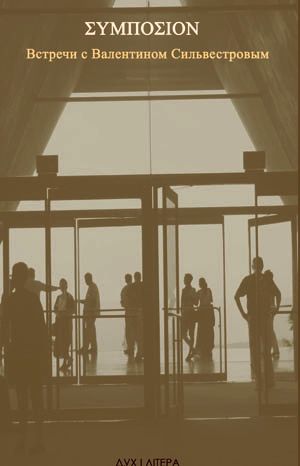The fall with Maestro
Dukh i Litera Publishers presents the book. Meetings with Valentyn Sylvestrov to commemorate the composer’s 75th birthday
This fall has been a real treat for music gourmets. Valentyn Sylvestrov’s pieces are being played in numerous concerts, and entire programs are dedicated to his career in music. Thus, two most recent meetings took place on October 30 and 31 at the National Philharmonic Society of Ukraine. On the first day his choral music was performed, while the second evening was dedicated to symphonic music. The Kyiv-based publishing house Dukh i Litera, too, presented the book Vstrechi s Valentinom Silvestrovym (Meetings with Valentyn Sylvestrov) by Alla Vaisband, a music critic, and Kostiantyn Sihov, a philosopher. The book comprises interviews with the composer and the accounts of his colleagues, in particular, the renowned Sofia Gubaidulina, Gia Kancheli, Arvo Part, Gidon Kremers, the poet Olga Sedakova et al. These memoirs and theorizing about Sylvestrov’s work merge to create a multi-dimensional portrait of the great master. The book can be perceived as a sort of sequel to the publication Dozhdatsia muzyki (Waiting for Music), Dukh i Litera, 2010. This edition has already become a best-seller both among professional musicians and the reading public. By the way, another present is coming out too: a DVD with the composer’s video recital.
In the foreword to the book Sihov writes:
“Sylvestrov’s music ‘moments’ implement Osip Mandelshtam’s verbal agenda: “footsteps should sound like actions.” Sylvestrov’s plastic is consonant with Sedakova’s interpretation of the same idea: “An action is a step up a vertical line. True music is indeed inspired by these, often silent, steps.”
The distance in the last century’s monumental pieces leaves the question of big forms open. The suspicions, related to this problem, are clear and justified. But systemized fragmentation is not an answer to a real question, but the odious system’s trick. The threat of “symphonism” is a challenge to entire contemporary art – not only musical, but also verbal and visual.
Sylvestrov took this challenge, and answered it with the new “symphony without symphonism.” The conversation about it suggested the title of this book, uniting all the key themes. Here, the author invites his guests to a “symphonic table.” Its contours and context do not hide their paradoxicality: lightning, staircases, and… presents.
Where could this combination come from, among the ruin of post-soviet disjunction?
Sylvestrov was born in 1937. How come Mandelshtam’s long-ostracized gospel dares sound again over the experiences of the maimed decades?
Our torture and our riches
He brought with him,
inarticulate:
The noise of poetry and
the brotherhood bell,
And the harmonious
shower of tears…
Sylvestrov was born in Kyiv, the very city whose agenda back then contained demolishing St. Sophia’s cathedral (11th century), following the just blasted St. Michael’s cathedral (12th century). His birthday, September 30, is The Day of saint martyrs Faith, Hope, Charity, and their mother Sophia. Sophia (Wisdom), whose play accompanies the “transition from non-existence to existence” is the leitmotif of his work. This theme also unites him with his contemporaries, philosophers Averintsev (b. 1937) and Krymsky (b. 1930). They will be mentioned in the book more than once. And this is something more than just a tribute of memory. The voices of the living and the dead call to us from the heights which man can muffle, but not destroy.
Sylvestrov’s music sings unobtrusively of the possibility of another eon, the new “era of thanksgiving” (Gennadii Aigi). The music which is heard, shared, and experienced together becomes a key part of ourselves and a form of real participation in another’s life. It comes from the same chalice as the wine and bread of communion.
Without contrasting friendly binges and funeral feasts, musical dedications sound to those present in the room, and those whom we lost, and who are on the way to “where love never ends.” At the same time, the composer emphasized the contrasts instead of obliterating them, and remarks, after Sedakova, that poems and music “consist of only beginnings and only ends.”
Nor did we obliterate the contrasts when compiling this book. The center of gravity of the evidence collected here is carried over to the other side of the biography’s lines, to the source where music is born. The aloofness and universal character of the book is reflected in its modest, utilitarian function of the book (just like the function of a CD or score), its ability to transform itself into fear and serve as a springboard for attention or a body for listening in.
Выпуск газеты №:
№68, (2012)Section
Culture





